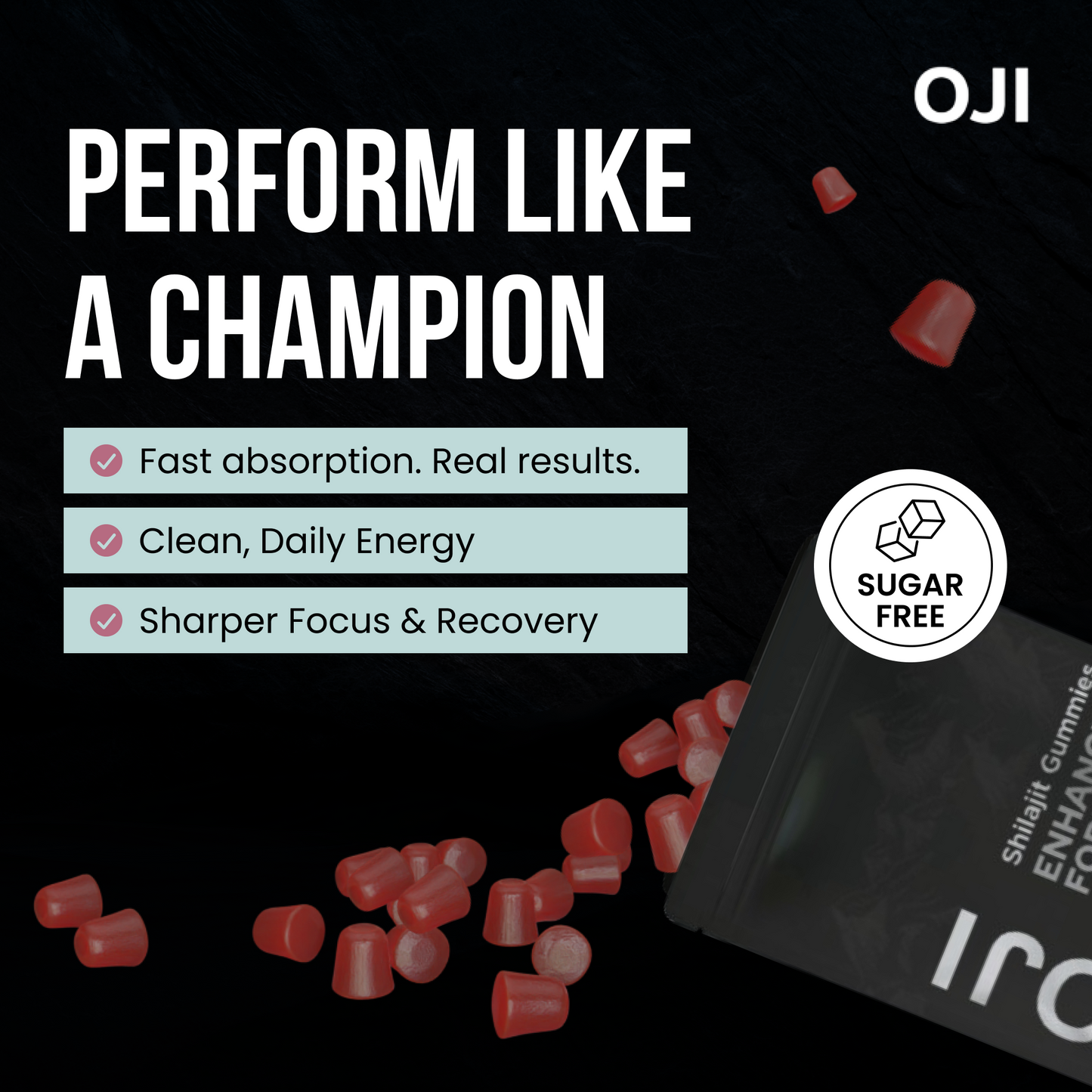How Ashwagandha Actually Works in Your Body
Think of ashwagandha as a personal trainer for your stress response system, not a quick fix. Instead of offering immediate relief like a pain reliever, it works gradually over time to build resilience. It's more like slowly training for a marathon than sprinting for the finish line.
Ashwagandha begins its work in your gut, where it's absorbed into your system. From there, it interacts with your stress hormones, like cortisol. This interaction isn’t a one-time event, but an ongoing process. That's why timing your ashwagandha intake is about working with your body's natural rhythms.
This isn’t a one-size-fits-all approach. Just like different training plans work for different people, ashwagandha affects individuals differently. Some people report feeling energized, while others feel more relaxed. Understanding your own response is key to finding the optimal time to take it. For instance, some wellness practitioners recommend taking ashwagandha in the morning for sustained energy, while others suggest evening use to promote relaxation and restful sleep. You might find this helpful: Ashwagandha for Stress.
Clinical studies worldwide point to ashwagandha's effectiveness for managing stress and anxiety. One study involving 372 adults showed significant benefits after 6-12 weeks of consistent use. While research supports its overall benefits, specific guidance on timing is still developing, particularly in the UK. Many people currently rely on traditional practices or personal experimentation to find what works best. Discover more insights. As research continues and regulatory bodies like the FSA complete their safety assessments, more precise recommendations on ashwagandha timing will likely emerge, helping consumers optimize their use.
Morning Timing: Building Your Daily Stress Shield

This infographic highlights some encouraging averages seen with ashwagandha use: a 45% reduction in stress, 60% improvement in sleep, and a 35% boost in cognitive performance. It really paints a picture of how ashwagandha could become a valuable part of a daily routine.
Many people find that incorporating ashwagandha into their morning routine sets them up for success. Think of it like building a protective barrier against the stresses of the day. Instead of reaching for that extra cup of coffee for a short burst of energy, consider ashwagandha as a potential source of sustained energy without the jitters and the eventual crash.
It's not about instant results or a sudden burst of energy; it’s about subtly shifting how you feel throughout the day. Think of it as working with your body’s natural rhythms.
Why Morning Might Be Right for You
Cortisol, a major stress hormone, is naturally higher in the morning. Ashwagandha can help modulate cortisol levels, promoting a calmer, more focused start to your day rather than that feeling of anxious overwhelm that many of us experience.
For instance, busy professionals, parents, and those working irregular shifts have reported feeling more balanced and energized throughout their day when taking ashwagandha with breakfast.
To illustrate further, let's look at a comparison of taking ashwagandha in the morning versus the evening:
Morning vs Evening Ashwagandha: Benefits Comparison
| Timing | Primary Benefits | Best For | Potential Drawbacks | Meal Recommendations |
|---|---|---|---|---|
| Morning | Increased energy, improved focus, stress management throughout the day | Individuals seeking daytime support for stress and energy levels | May be less effective for sleep improvement in some individuals | With breakfast |
| Evening | Improved sleep quality, relaxation, reduced anxiety | Individuals struggling with sleep or evening anxiety | May cause drowsiness if taken too early in the evening | With dinner or before bed |
This table summarizes the core differences between morning and evening intake, helping you choose the best time for your needs. Remember, these are potential benefits, and individual results can vary.
Finding What Works Best for You
While many find morning ashwagandha energizing, everyone responds differently. The key is to observe how your body reacts. Experiment by adding ashwagandha to your morning routine, and note any changes in your energy and focus throughout the day. Consider how it interacts with your breakfast foods and what reasonable expectations should be. This personalized approach will help you discover if morning ashwagandha is the right choice for you.
Evening Timing: Your Natural Wind-Down Ritual

Many people find that taking Ashwagandha in the evening helps them unwind and sleep better. It's not a quick fix like a sleeping pill, though. Think of it more like gently encouraging your body's natural transition to sleep.
Aligning With Your Body's Rhythm
Ashwagandha can lower cortisol levels, and this works well with your body's natural cortisol dip in the evening. It's like adding a calming layer to your pre-sleep routine. However, timing is everything.
Taking Ashwagandha too early in the evening might make you drowsy before you're ready for bed. A little experimentation is key. Some people find taking it with dinner works best, while others prefer a dose an hour or two before lights out.
Integrating Ashwagandha Into Your Evening Routine
Everyone's evening routine is different. Do you meditate? Sip herbal tea? Read a book? Think about how Ashwagandha can fit into your specific routine.
Maybe you could incorporate it into your evening tea ritual, adding a new layer of calm. The aim is to make it a seamless part of your wind-down process.
Managing Expectations and Addressing Concerns
It's important to remember that Ashwagandha isn't a magic sleep solution. While it can improve sleep quality for many, it won't work miracles for everyone. Some people even experience morning grogginess if they take it too close to bedtime.
Pay attention to your body's response. How long does it take to notice any changes in your sleep? Do you wake up refreshed, or are you groggy? Honest self-assessment will tell you if evening Ashwagandha is the right choice for you.
Food Timing: Solving the Meal Puzzle

Figuring out the optimal time to take ashwagandha can feel a bit like a puzzle, especially when considering whether to take it with food or on an empty stomach. Just like one size doesn't fit all with clothing, the perfect ashwagandha routine varies from person to person due to individual differences in our digestive systems and how we process this powerful herb.
Absorption and Bioavailability
A key factor in ashwagandha's effectiveness is its bioavailability. Think of it as the amount of the good stuff that actually makes its way into your bloodstream where it can do its work. Food can play a significant role here, sometimes acting as a helper and other times as a hinderance.
For instance, taking ashwagandha with a meal that includes healthy fats can significantly boost its absorption. Imagine those fats acting like tiny vehicles, carrying the beneficial compounds from ashwagandha into your system. On the other hand, taking ashwagandha on an empty stomach can lead to some tummy troubles for certain individuals.
Meal Pairing and Digestive Comfort
Some nutritionists suggest taking ashwagandha with a warm meal. This can be a gentler approach, particularly for those with sensitive stomachs. It’s like warming up your car engine on a cold day – it just makes things run a little smoother.
It's also worth noting that some foods might interact with ashwagandha. This could affect how well it’s absorbed or potentially cause unwanted side effects. Paying close attention to how your body responds to different combinations is crucial. For more insights into timing your supplements, you might find this article helpful: Best time to take Shilajit.
Strategies for Maximising Absorption
Looking to get the most out of your ashwagandha? There are a few simple strategies you can try. Consider adding a teaspoon of ghee or coconut oil to your ashwagandha drink, or simply take it with a meal that includes healthy fats.
If you experience any stomach irritation, try taking ashwagandha with a small snack or a full meal. These practical tips can make a real difference in your experience and help ensure you’re getting the full benefits of this incredible herb.
Creating Your Personal Ashwagandha Schedule

Finding the right time to take ashwagandha is a bit like finding the perfect coffee blend—it’s a personal journey. There's no one-size-fits-all answer, it's about discovering what works best for your individual needs and lifestyle.
Factors to Consider When Scheduling
Several things influence the ideal ashwagandha timing for you. Think of it like planning a road trip. Your work schedule is like the route you take, your sleep patterns are like the time of day you prefer to drive, and your stress levels are like the traffic you might encounter.
For instance, if you work night shifts, your ashwagandha schedule will naturally look different than someone who works a typical 9-to-5 job.
Also, consider any other supplements you might be taking. Some supplements can interact with ashwagandha. It's a good idea to space them out or chat with a healthcare professional to make sure you’re maximizing the benefits of each supplement and avoiding any unwanted interactions.
Experimenting and Adapting
Discovering the best time to take ashwagandha often involves a little experimentation. Pick a time, either morning or evening, and stick with it for a few weeks. Pay attention to how you feel. Are your energy levels more balanced? Are you sleeping better? How are you handling stress? Jot down your observations in a notebook or use a note-taking app on your phone.
Be ready to adjust your schedule as needed. If you notice any unwanted side effects or aren't feeling the benefits you expected, try tweaking your timing. Switching from morning to evening, or the other way around, could make all the difference. It’s much like adjusting your workout routine based on your progress – adapting is key to getting the most out of it.
Long-Term Strategies for Success
Life has a way of throwing unexpected events our way—travel, stressful periods at work, or even just the change of seasons can all disrupt our routines. Your ashwagandha schedule should be flexible enough to roll with these punches. Just as you'd adjust your travel plans if a flight gets delayed, you might need to tweak your ashwagandha timing to accommodate changes in your schedule or time zone.
Your wellness goals might also evolve over time. What worked for you six months ago might not be the best approach now. Regularly checking in with yourself and your ashwagandha routine is crucial. It's about creating a sustainable, personalized plan that supports your well-being over the long haul.
UK Safety Guidelines and Regulatory Insights
Thinking about using ashwagandha in the UK? It's wise to get a handle on the regulations and some practical safety tips. This involves staying informed about the current regulatory situation, understanding what makes a high-quality supplement, and knowing what the Food Standards Agency (FSA) is doing to evaluate this increasingly popular supplement.
The regulatory landscape surrounding ashwagandha is constantly evolving, and this is important to consider. The UK's Food Standards Agency (FSA) has been actively collecting information on ashwagandha supplements. This could eventually impact how and when we take them for optimal safety and effectiveness.
In 2024, the FSA asked for public input to help assess the risks associated with ashwagandha, reflecting its growing use. This initiative could lead to more concrete recommendations on when to take it, potentially aligning with traditional Ayurvedic practices which often suggest morning and evening doses to maximize benefits. Currently, however, there's no official guidance on the best time to take ashwagandha in the UK because the FSA hasn’t yet established safe levels for use in supplements. Find out more about the FSA's ashwagandha review.
Quality and Safety Considerations
Talking with healthcare professionals and supplement experts emphasizes the importance of understanding potential drug interactions and contraindications before you start taking ashwagandha. Choosing well-known, trusted brands is important, as is following dosage recommendations. Knowing when ashwagandha might not be right for you is also crucial. This is particularly important for people with pre-existing health conditions or those taking certain medications.
It's like starting any new activity – understanding the potential pitfalls upfront can save you trouble down the line. Ashwagandha, while generally considered safe, is no exception.
Practical Steps for Safe Use
If you're thinking about adding ashwagandha to your routine, speaking with a qualified healthcare professional is an excellent first step. They can provide personalized advice on the potential benefits and risks, especially considering your current health situation and medications.
Also, knowing what to look for in a quality UK ashwagandha product is essential. This ensures you're choosing a supplement that meets important safety and quality standards. Think of it like buying anything important – a little research goes a long way.
Your Ashwagandha Timing Action Plan
So, you're ready to add ashwagandha to your daily routine? Fantastic! Figuring out the best time to take it is a bit like finding the perfect pair of shoes – it's a personal journey. It's about understanding how ashwagandha interacts with your unique body. This section offers a practical guide to help you navigate ashwagandha timing, replacing confusion with confidence.
Start With a Clear Goal
First, pinpoint your main objective. Are you looking for stress relief, hoping to sleep better, or maybe seeking a little energy boost? Your goal acts as a compass, pointing you towards an initial timing strategy. For instance, if stress management is your focus, a morning dose might be best. If sleep improvement is top of mind, you might consider an evening dose.
Track Your Progress: Listen to Your Body
Once you've chosen a starting point, pay close attention to how you feel. Think of it like tuning a musical instrument – you adjust and fine-tune until the sound is just right. A simple journal or a note-taking app can be incredibly helpful. Jot down notes about your energy levels, mood, sleep quality, and anything else you notice. You don't need to collect meticulous data; this is about observing trends and understanding your body's unique response to ashwagandha.
Adjust and Adapt: Fine-Tuning Your Approach
After a couple of weeks, look back at your notes. Are you experiencing the benefits you were hoping for? If not, don’t worry! This is where the "action plan" comes into play. Experiment with adjusting your timing. If you started with morning doses, try switching to evening, or the other way around. You can also experiment with taking ashwagandha with or without food. This process of experimentation is key to finding what truly works best for you. You might also find our article on other natural stress relievers helpful: Top Natural Remedies for Stress Relief in 2025.
Remember, consistency is key. Stick with your chosen timing for at least a week or two before making any changes. And if you have any questions or concerns, don't hesitate to chat with a healthcare professional. Finding the right ashwagandha routine requires a little patience, but the positive effects are worth the effort.
To help guide your ashwagandha journey, take a look at the table below:
Ashwagandha Timing Quick Reference Guide
A practical reference table showing optimal timing recommendations based on different health goals and lifestyle factors
| Health Goal | Recommended Timing | Dosage Considerations | Meal Timing | Expected Timeline |
|---|---|---|---|---|
| Stress Relief | Morning | Start with a low dose (e.g., 300mg) and adjust as needed | With or without food | 2-4 weeks |
| Sleep Improvement | Evening | Start with a low dose (e.g., 300mg) and adjust as needed | 1-2 hours before bedtime | 1-2 weeks |
| Energy Boost | Morning | Start with a low dose (e.g., 300mg) and adjust as needed | With or without food | 1-2 weeks |
This table provides a general starting point. Remember, individual responses to ashwagandha can vary. Use this guide as a foundation, but always listen to your body and adjust accordingly.
Ready to experience the benefits of a premium, enhanced Shilajit supplement? Oji Shilajit combines the power of Shilajit with adaptogens like ashwagandha and lion's mane for optimal well-being. Visit Myoji today!





